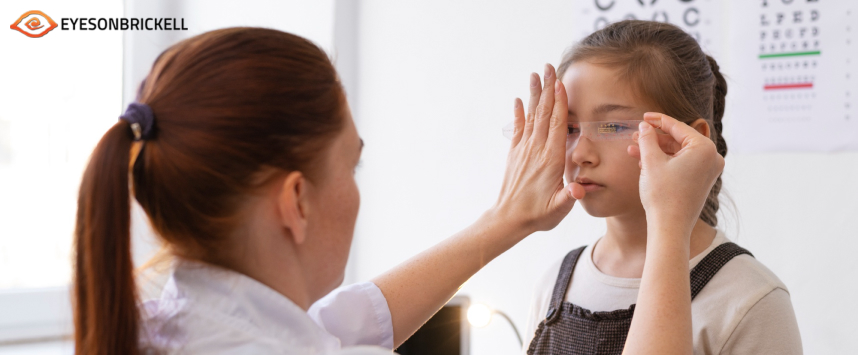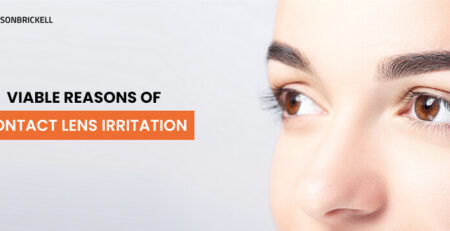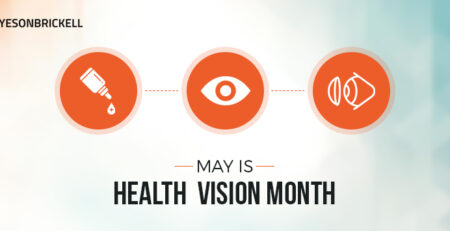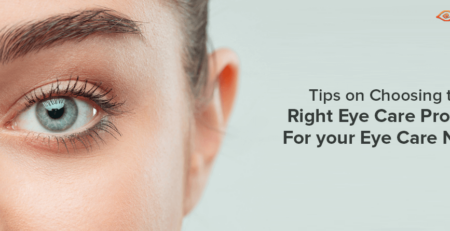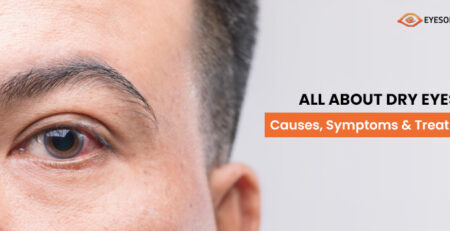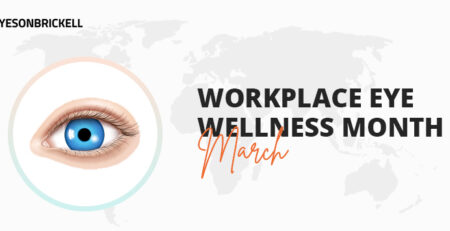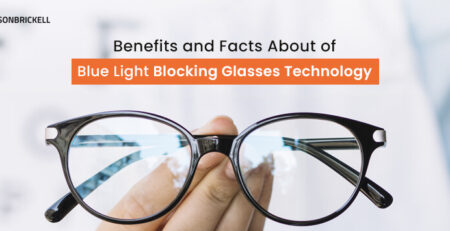Common Vision Problems in School-Aged Children and How to Spot Them
Your child’s vision is a cornerstone of their development. Good eyesight can help them enjoy their hobbies, learn to read and write, and even play sports. Unfortunately, many children experience common vision problems that can significantly impact their daily lives.
Did you know that according to the US Centers for Disease Control and Prevention (CDC), approximately 6.8% of US children under 18 suffer from eye and vision issues? Not only this, nearly 3% of kids under 18 years have vision impairment or blindness.
It’s essential to be at least familiar with common vision problems and spot them early. Getting acquainted with these problems helps ensure our school-aged children see clearly and succeed in their activities. In this blog, we will learn about:
- The Importance of Clear Vision in Childhood
- Common Vision Problems in School-Aged Children
- How to Regulate the Vision Issue Signs?
- Importance of Regular Eye Exams
- The Role of Vision Therapy
- How Vision Therapy Can Help?
- Finding a Vision Therapy Specialist
The Importance of Clear Vision in Childhood
Vision is a child’s primary sensory input, accounting for 80% of classroom learning. When a child struggles with their vision, it can lead to difficulties in school, frustration, and low self-esteem. That’s why it’s crucial to be aware of common eye problems and know how to identify them early on.
Common Vision Problems in School-Aged Children
Refractive Errors
Refractive errors happen when the eye does not focus light correctly on the retina.
- Myopia (Nearsightedness): Myopia is a condition that affects children and makes it difficult for them to see objects clearly from a distance. They may squint or sit close to the TV or chalkboard to improve their vision. Did you know that 4% of Children 6 to 72 months old in the USA and also 9% of children between 5 and 17 are reported to have myopia by the Prevent Blindness Organization?
- Hyperopia (Farsightedness): The opposite of nearsightedness is hyperopia, which makes nearby objects appear blurry. Some common symptoms among children with hypermetropia include eye fatigue and headaches. You might be surprised to find out that about 21% of children aged between six months and 72 months suffer from Hypermetropia, while 13% of children ages 5-17 years endure similar conditions.
- Astigmatism: Astigmatism occurs when one has an irregularly shaped cornea, resulting in blurred vision at all distances. Also referred to as “eye strain,” signs include headaches and difficulty seeing at night. In the US, astigmatism affects approximately 15% to 28% of kids aged 5 to 17.
Eye Alignment Issues
Problems with eye alignment can also affect a child’s vision.
- Strabismus (Crossed Eyes): In strabismus, the eyes don’t align correctly. This can cause double vision, depth perception issues, and even lazy eyes. In the USA, 2-4% of children under 6 have crossed eyes. Thankfully, early detection and treatment are essential to prevent permanent vision loss.
- Amblyopia (Lazy Eye): occurs when the brain favors one eye over the other, decreasing vision in the weaker eye. Early intervention is crucial to prevent permanent vision loss.
Other Common Vision Problems
- Eye Infections: Pink eye (conjunctivitis) is a common eye infection in children. It causes redness, itchiness, and a watery discharge.
- Eye Fatigue and Strain: Excessive screen time, poor lighting, and inadequate breaks can lead to eye strain, which can cause headaches, blurred vision, and dry eyes.
How To Regulate The Vision Issue Signs?
Some common vision problems are apparent, whereas others might go unnoticed. Learning possible signs and symptoms that may indicate a vision problem is essential.
Common Symptoms of Vision Problems
- Blurred or Double Vision: Blurry or double vision is caused by an error in refraction or eye alignment problem.
- Eye Pain or Discomfort: A headache, strain, and itching could tell you something about your eyesight.
- Difficulty Focusing: It is possible for refractive errors to cause trouble with nearsightedness and farsightedness.
- Sensitivity to Light: Various eye conditions have excessive sensitivity towards light.
Behavioral Indicators
Sometimes, behavior changes in children may be indicative of underlying visual issues:
- Covering One Eye: This might mean a squint (strabismus) or lazy eyes (amblyopia).
- Tilting the Head: In this way, one may try to see better or avoid double images.
- Avoiding Reading or Close Work: Difficulty with these tasks is often linked with poor sight.
- Poor School Performance: It will significantly impact a child’s achievement at school if they have a visual condition.
Importance of Regular Eye Exams
Vision problems need to be discovered early. For children, regular comprehensive eye exams are necessary. The American Academy of Ophthalmology suggests the following schedule:
- First Eye Exam: Between 6 and 12 months of age.
- Second Eye Exam: At age 2 or 3.
- Regular Exams: Every two years until age 18, and then yearly.
By planning frequent eye exams, you can identify possible sight problems earlier and take necessary actions.
The Role of Vision Therapy
Vision therapy is a specialized program that targets visual skill deficits and addresses underlying vision conditions impacting children’s learning abilities, behavior patterns, and overall development – it isn’t simply about performing exercises for your eyes; rather, it trains the brain and the eyes on how they should function as a unit.
How Vision Therapy Can Help?
Vision therapy helps with many different types of vision issues, such as:
- Eye tracking and focusing difficulties.
- Eye coordination problems.
- Depth perception issues.
- Visual processing disorders.
This treatment aims to improve these visual skills so that reading or writing becomes easier while engaging in visually demanding tasks. It can also reduce symptoms such as headaches, eyestrain, and vertigo.
Finding an Eye Care Specialist
If you suspect your child has a vision problem, consult us at Eyes on Brickell in Miami for eye care treatment. Our specialist, Dr. Antoine Copty, will evaluate your child’s vision, diagnose underlying issues, and develop a customized treatment plan.
Remember: Early intervention is vital to successful vision therapy. If you have concerns about your child’s vision, don’t hesitate to seek professional help.
Make An Appointment At Eyes on Brickell Today!
Vision problems in school-aged children are more common than you might think. By understanding the signs and symptoms and by seeking professional care, you can help your child achieve their full potential. Regular eye exams, early detection, and appropriate treatment are essential for ensuring your child’s vision health and overall well-being.
For Miami parents, Dr. Antoine Copty at Eyes on Brickell is a highly experienced eye doctor specializing in diagnosing and treating vision issues in kids. So what are you waiting for? Book an appointment at 2885 SW, 3rd Ave Miami, FL 33129, to give your child the best possible care for their vision.

